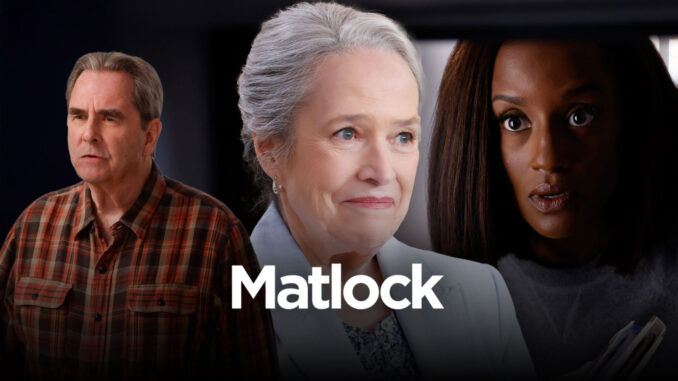
From Reboot to Hit: Decoding Matlock’s Unexpected Renewal and the Road Ahead
The legal eagle, once a fixture of primetime television, has returned to the roost, and with unexpected vigor. CBS’s reboot of “Matlock,” starring Kathy Bates in the iconic role previously held by Andy Griffith, defied initial expectations and secured a swift early renewal. This wasn’t just a nostalgic revival; it was a strategic resurrection, fueled by a confluence of factors: a savvy understanding of its target audience, a commitment to strong storytelling, and perhaps most importantly, a series of “big clauses” – strategic decisions baked into the show’s DNA – that positioned it for success. Understanding these elements is key to deciphering Matlock’s resurgence and pondering what the future holds for this reimagined legal drama.
One of the primary reasons for Matlock’s unexpected success lies in its unwavering commitment to its core audience: viewers seeking comfort, familiarity, and a predictable yet engaging form of entertainment. In an era dominated by complex, morally ambiguous narratives and gritty realism, “Matlock” offers a comforting return to the classic procedural. Bates’s Madelyn “Matty” Matlock embodies the same unwavering moral compass and cunning intellect that made Andy Griffith’s Ben Matlock so beloved. The cases are intriguing but not overly convoluted, the villains are clearly defined, and justice, though often delayed, is ultimately served. This predictability is not a weakness; it’s a strength that caters to a loyal demographic hungry for content they can trust.
This understanding of the target audience is reflected in the show’s pacing and tone. While the original “Matlock” was known for its deliberate, almost leisurely pace, the reboot injects a contemporary energy without sacrificing the charm. The storylines are tighter, the dialogue crisper, and the inclusion of modern technology, like DNA evidence and digital forensics, feels organic rather than forced. This modernization, while subtle, allows the show to resonate with a broader audience while still maintaining the core values that made the original a success.
Now, let’s delve into the “big clauses” – the strategic decisions that solidified Matlock’s trajectory towards renewal. The first, and arguably most crucial, was casting Kathy Bates. A seasoned actress with a commanding presence and undeniable talent, Bates brought gravitas and nuance to the role of Matty. She wasn’t simply mimicking Griffith’s portrayal; she created a distinct character, a sharp, compassionate lawyer navigating a male-dominated world with wit and resilience. Her casting signaled a commitment to quality and a willingness to evolve the character beyond simple imitation.
Another “big clause” was the show’s emphasis on ensemble storytelling. While Bates undoubtedly anchors the series, the supporting cast, featuring the likes of Skye P. Marshall and Jason Ritter, are more than just sidekicks. They are integral to the storylines, providing emotional depth and contributing significantly to the overall narrative. This ensemble approach allows for more complex character development and creates opportunities for future spin-offs or expanded storylines, further securing the show’s longevity.
Finally, and perhaps most subtly, the show shrewdly avoids gratuitous violence and explicit content. This conscious decision allows “Matlock” to appeal to a wider range of viewers, including families, who may be hesitant to embrace more graphic legal dramas. This broad appeal, combined with the inherent nostalgia factor, significantly contributes to the show’s impressive ratings and ultimately fueled its early renewal.
So, what’s next for “Matlock”? The early renewal signals a vote of confidence from CBS, suggesting they see significant potential in the reboot. Future seasons could explore deeper into Matty’s past, unraveling more about her personal life and motivations. Expanding the roles of the supporting characters could also provide fertile ground for compelling storylines and further solidify the ensemble dynamic. There’s also the potential for guest appearances from other established legal drama veterans, creating a synergistic universe of legal expertise.
However, the key to Matlock’s continued success lies in maintaining the balance between nostalgia and innovation. It needs to stay true to its core values – justice, integrity, and a comforting sense of predictability – while also continuing to evolve and adapt to the changing landscape of television. This delicate dance will determine whether “Matlock” can not only recapture the magic of the original but also establish itself as a lasting legal powerhouse for a new generation. The case for its success is strong, but the final verdict will ultimately depend on the show’s ability to execute its strategic vision and continue to resonate with its devoted audience.
